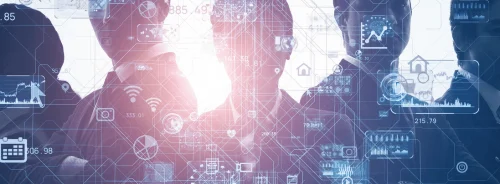Radiologic reports are traditionally written by radiologists to convey detailed findings from medical imaging to other healthcare professionals. However, as patients become more involved in their healthcare decisions, there is a growing demand for these reports to be easily understandable by patients themselves. This shift towards patient-centred care has led to the exploration of new methods to simplify medical communication, including the use of artificial intelligence (AI) tools like ChatGPT. This article published in Scientific Reports explores the potential benefits and challenges of using ChatGPT to generate patient-friendly radiologic reports, based on a study conducted with spine MRI reports.
The Challenge of Radiologic Report Comprehension
Radiologic reports are inherently technical and laden with specialised terminology that can be difficult for non-medical professionals to understand. Studies have shown that the average education level of patients corresponds to that of a middle school student. Yet, only a small fraction of radiologic reports are written at this level of comprehension. Despite the proven benefits of patients understanding their medical conditions and treatment plans, it is unrealistic to expect radiologists to rewrite these reports in layman’s terms due to time constraints and workload. Instead, alternative solutions such as patient portals and personal health records (PHRs) are being developed to improve communication between patients and healthcare providers.
The Advent of ChatGPT in Healthcare
ChatGPT, an AI chatbot based on a large language model (LLM), has garnered significant attention for its ability to engage in human-like conversations and generate coherent text. Released in November 2022, ChatGPT's potential applications in various fields, including healthcare, are being actively explored. Recent studies have shown that AI chatbots can provide high-quality and empathetic medical counselling, raising the question of whether they can also help patients understand complex radiologic reports. ChatGPT’s text summarisation and simplification capabilities make it a promising tool for creating patient-friendly versions of these reports.
Study Design and Evaluation
A study was conducted using spine MRI reports from a tertiary referral centre to evaluate the effectiveness of AI-generated radiology reports. The study involved 685 anonymised reports, which ChatGPT processed to generate three types of outputs: summaries, patient-friendly reports, and recommendations for the next steps. Two radiologists and two non-physicians assessed these AI-generated reports for quality, accuracy, and comprehensibility.
The radiologists evaluated the AI-generated summaries, patient-friendly reports, and recommendations using a 5-point Likert scale. The results showed high scores for the quality of summaries (4.86), compatibility of patient-friendly reports (4.71), and agreement of recommendations with those made by radiologists (4.94). These findings indicate that ChatGPT can produce high-quality radiologic reports that are both accurate and easier for patients to understand.
Non-physician evaluators, representing average patient knowledge, also assessed the reports. They found a significant improvement in comprehension when reading the patient-friendly reports generated by ChatGPT compared to the original technical reports. This suggests that ChatGPT can effectively bridge the communication gap between radiologists and patients.
Addressing the Issue of Artificial Hallucinations
One critical challenge in using AI for medical applications is the occurrence of "artificial hallucinations," where the AI generates plausible but incorrect information. In this study, 1.12% of the AI-generated reports contained clinically significant hallucinations, and 7.40% included potentially harmful expressions. These errors highlight the need for radiologists to carefully oversee the accuracy and reliability of AI-generated content. While the percentage of errors may seem low, even minor inaccuracies can have significant implications in the medical field.
Implications and Future Directions
The use of ChatGPT to generate patient-friendly radiologic reports presents a promising advancement in patient-centred care. The ability to produce clear, understandable summaries and recommendations can enhance patient engagement, improve adherence to treatment plans, and ultimately lead to better health outcomes. However, the risk of artificial hallucinations necessitates that experienced radiologists review AI-generated reports to verify their accuracy.
Future research should focus on expanding the study to include different imaging modalities and disease types to validate the consistency of these findings. Additionally, incorporating feedback from actual patients could provide more insights into the practical benefits and limitations of using AI in this context. Advances in prompt engineering and the development of more robust LLMs could further enhance the quality and reliability of AI-generated medical reports.
While AI tools like ChatGPT hold significant potential for improving the comprehensibility of radiologic reports, their integration into clinical practice must be approached with caution. Ensuring the accuracy and reliability of these tools through rigorous evaluation and oversight by medical professionals is crucial to realising their full potential in enhancing patient care.
Source & Image Credit: Scientific Reports






